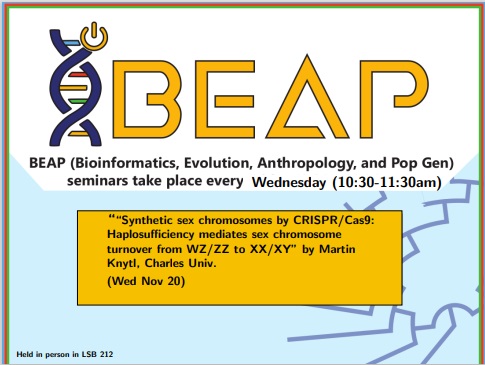Of nutrients and toxicants: Plant root membrane transport in a time of major flux by Devrim Coskun, Université Laval.
This week’s seminar will be given by Devrim Coskun, Université Laval.
There will be coffee and snacks before the seminar. Please bring your own mug.
Thursday 7 Nov, 4:00PM, in HSC 1A5
Of nutrients and toxicants: Plant root membrane transport in a time of major flux
We are living through turbulent times. Chief among the myriad global challenges we face is sustainably feeding an estimated 9.5 billion people by mid-century while simultaneously combating (and mitigating) a host of environmental issues which modern agriculture, itself, has contributed to (e.g., the rises in pollution, soil erosion, pests, disease, drought, and salinity stress). Using a range of experimental techniques, both classical (e.g., radioisotopic flux analysis and electrophysiology) and modern (e.g., heterologous expression systems and fiber-optic photometry), my research aims to address this challenge by investigating the underlying molecular, cellular, and physiological transport mechanisms of mineral nutrient and toxicant acquisition in the roots of the world’s foremost crops. I will discuss my work on plant silicon (Si) transport and Si-derived resilience against a wide range of environmental stressors, both biotic and abiotic, and how we can effectively exploit this elusive but beneficial nutrient to mitigate crop stress and reduce our reliance on pesticides and fungicides. I will also discuss my work on root ammonium (NH3/NH4+) transport, particularly in the contexts of ammonium toxicity and reducing the prodigious waste and environmental damage caused by N fertilization. Lastly, I will discuss my aims to elucidate the nature of primary sodium (Na+) uptake under conditions of salinity stress, and what low-affinity potassium (K+) transport can reveal about this process. Abstract: Our lab studies fundamental mechanisms of stem cell regulation in the context of the Drosophila larval hematopoietic organ, the lymph gland, a powerful, genetically tractable model system to study hematopoiesis. Our work focuses on two key questions: i) how animals monitor the environment to detect and respond to the presence of pathogens, and ii) how blood progenitor cells in the lymph gland, a large architecturally complex organ, ensure that they respond to environmental signals in a coordinated fashion. To address the first question of environmental monitoring, I will present work from our lab that has uncovered a novel role for the sensory system in detecting and responding to bacterial infection. Specifically, our work shows that Drosophila larvae use taste to detect bacterial peptidoglycans and respond by modulating immune cell production. We show that specific PeptidoGlycan Receptor Proteins (PGRP) act in bitter taste neurons via the IMmune Deficiency (IMD) pathway to control blood cell differentiation. Moreover, taste-mediated sensing of bacteria in larvae primes the immune system, and improves survival following infection in adult flies. These results show that sensory inputs such as taste have an important role in protecting animals from bacterial infection. To address the second question of progenitor coordination, I will present our work on elucidating the role of gap-junctions in mediating cell-cell communication in the lymph gland. We showed that gap-junctions mediated Ca+2-signaling between blood stem cells is required for their maintenance and proper differentiation. At the heart of this work is a large array of quantitative image analysis tools we built and validated to study Ca+2-signaling in the lymph gland. Our work so far has shown that gap-junctions connect lymph gland cells in a signaling network that allows the exchange of Ca+2-signals across many cells. Changes in the frequency or amplitude of the Ca+2-signals cell behavior in the blood stem cells by modulating downstream Ca+2-signaling pathways. Overall, our findings add to the growing list of examples of crosstalk between the nervous system and the immune system and provide key mechanistic insights into how environmental signals are processed and coordinated during the cellular immune response.
NewsRelated News
News Listing
3 days ago
3 days ago

